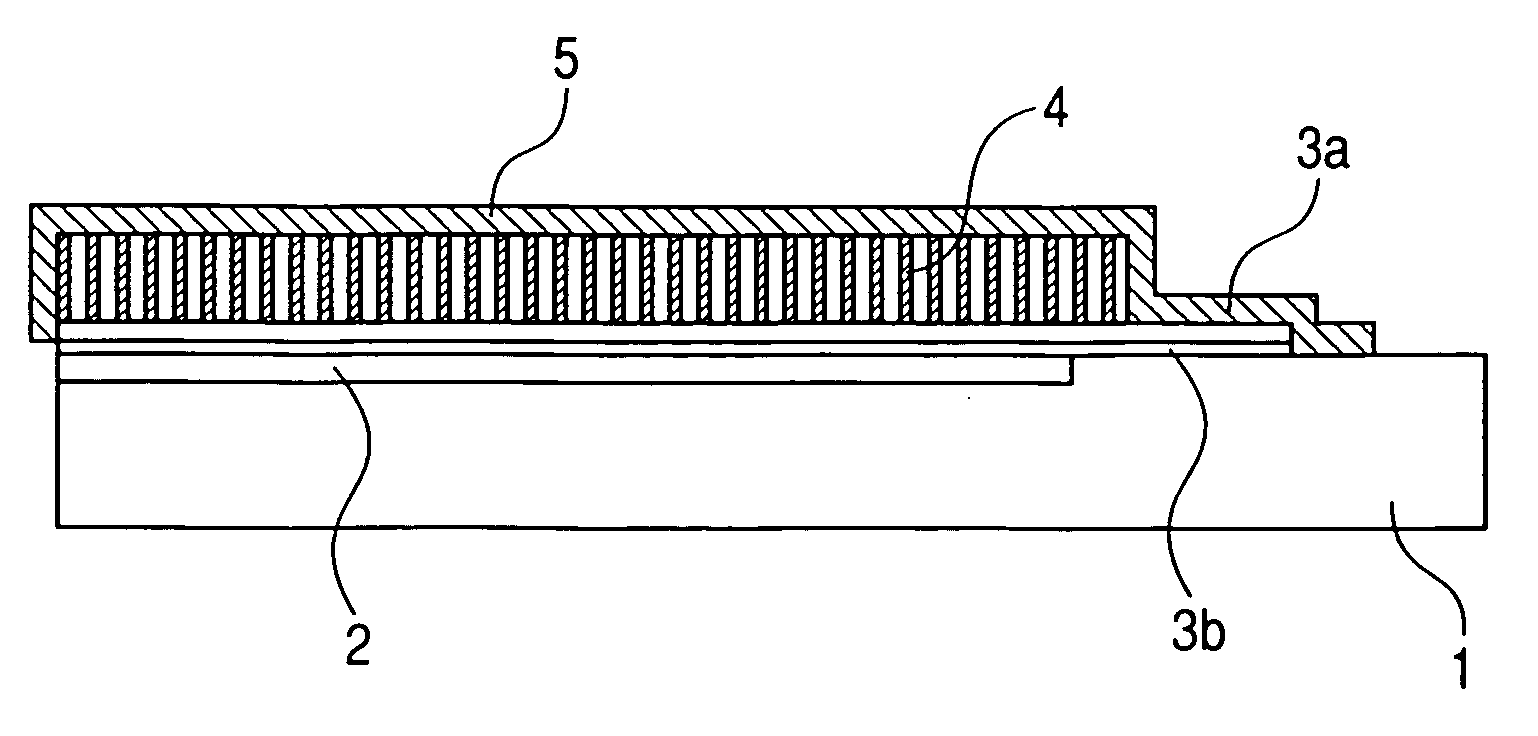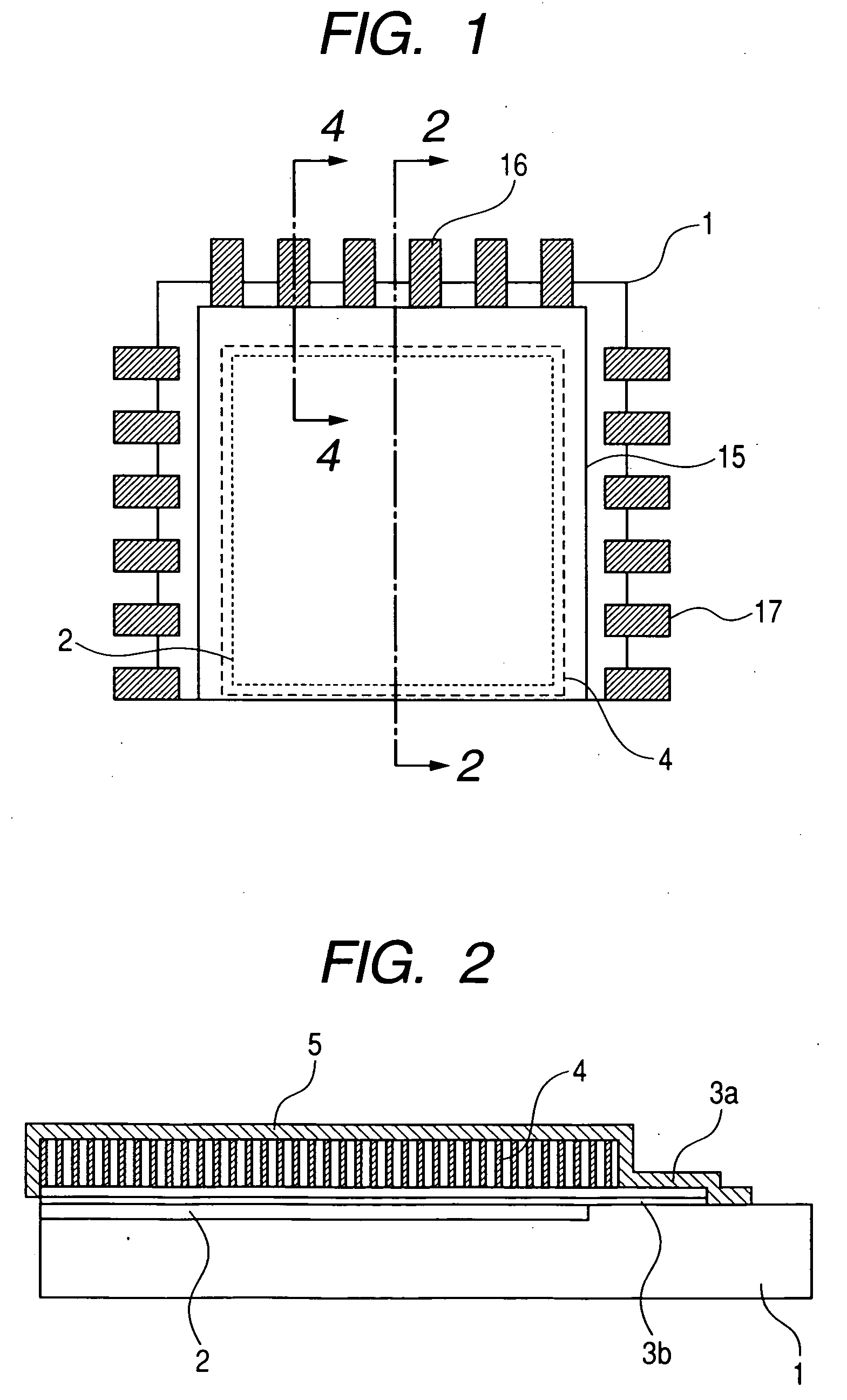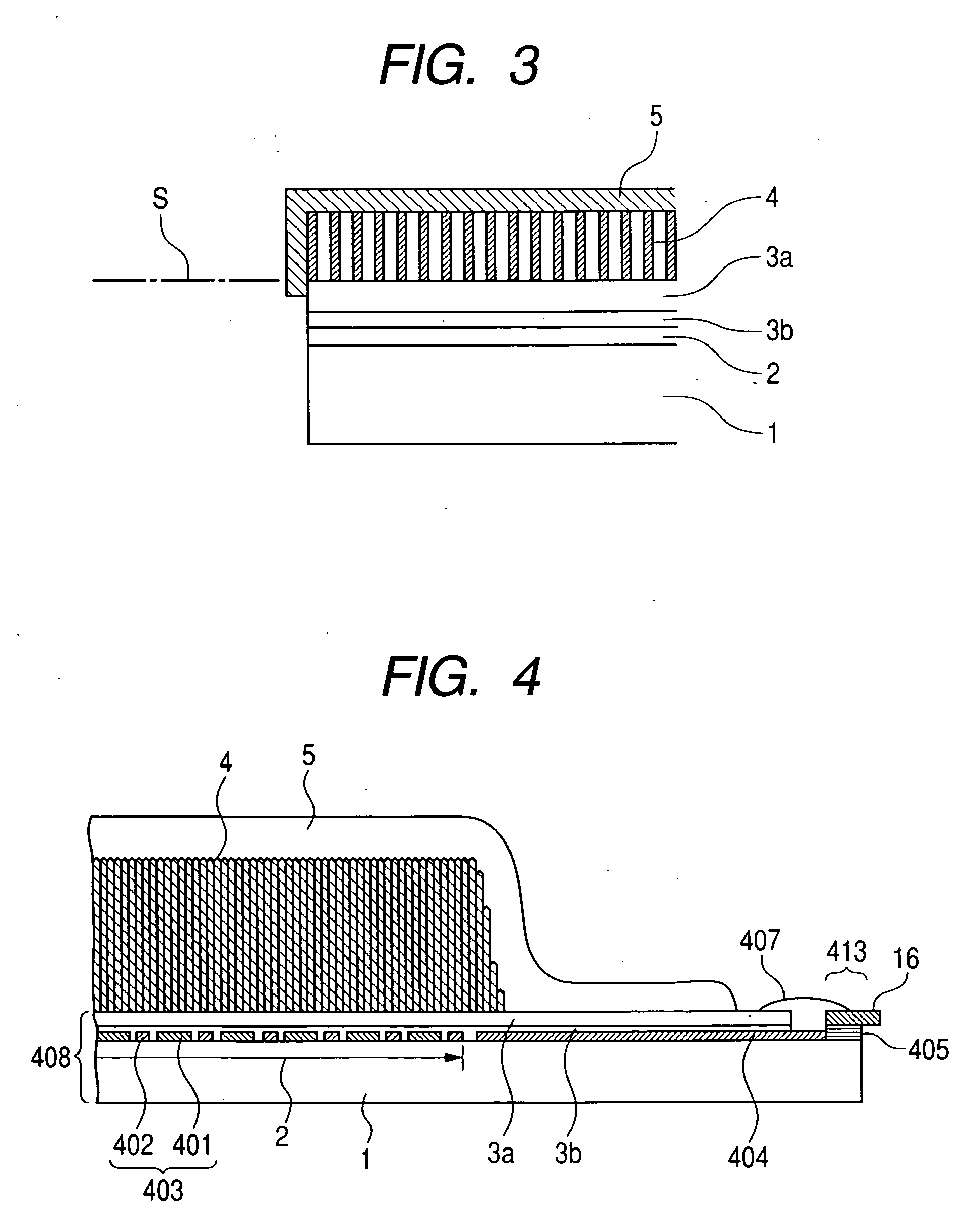Radiation detecting apparatus, scintillator panel, and radiographing system
a technology of scintillator and phosphor protective layer, which is applied in the direction of instruments, radiation measurement, measurement devices, etc., can solve the problems of slow film forming speed of phosphor protective layer, inconvenient operation, and disturbance of inherent light propagation, so as to reduce the cost of the product, reduce the number of working steps, and simplify the manufacturing steps
- Summary
- Abstract
- Description
- Claims
- Application Information
AI Technical Summary
Benefits of technology
Problems solved by technology
Method used
Image
Examples
first embodiment
[0055]FIG. 1 is a schematic plan view of the radiation detecting apparatus of the direct evaporation deposition type according to the first embodiment of the invention. FIG. 2 is a cross sectional view taken along the line 2-2 in FIG. 1. FIG. 3 is a partially enlarged diagram of FIG. 2. FIG. 4 is a cross sectional view taken along the line 4-4 in FIG. 1. In FIGS. 1 to 4, reference numeral 1 denotes a substrate such as glass or the like; 401 photoelectric conversion elements; and 402 wirings. A photoreceiving unit 403 is constructed by the photoelectric conversion elements 401, the wirings 402, and thin film transistors (TFTs). Reference numeral 404 denotes an electrical connecting unit (lead-out wiring); 3b a sensor protective layer; 3a a phosphor underlying layer; and 405 a wiring connecting unit. A photodetector (sensor panel) 408 is constructed by the component elements 1, 401, 402, 404, 3b, 3a, and 405. A connecting unit of the electrical connecting unit 404 of the sensor panel ...
second embodiment
[0140]FIGS. 9 and 10 are schematic diagrams of a radiation detecting apparatus according to the second embodiment of the invention. In each diagram of each embodiment (the second to eighth embodiments), which will be explained hereinbelow, the sensor protective layer 3b and the phosphor underlying layer 3a are represented by reference numeral 3.
[0141] The second embodiment differs from the first embodiment with respect to a point that up to the side surface of the substrate 1 is covered with the phosphor protective layer 5 made of the hot melt resin in order to improve the moisture-proofing effect more than that in the case of the first embodiment. Since only the covering ranges of the phosphor protective layer 5 made of the hot melt resin and the phosphor protective member in FIGS. 9 and 10 differ from those in FIGS. 2 and 5, explanation of the layout, each function, and the like is omitted here. On the side surface of the substrate 1, by executing the hot pressing (heat pressing ...
third embodiment
[0142]FIGS. 11 and 12 show the third embodiment of the invention. The third embodiment differs from the first and second embodiments with respect to a point that up to the back surface of the substrate 1 is covered with a part of the phosphor protective layer 5 made of the hot melt resin.
[0143] According to the embodiment, not only the further moisture-proofing effect can be obtained but also there can be obtained such an effect that since the phosphor layer 4 and the side surface of the substrate 1 are perfectly covered, the phosphor protective layer (FIG. 11) and the phosphor protective member (FIG. 12) having the phosphor protective layer, the reflection layer, and the reflection layer protective layer are difficult to be peeled off by the external force can be also obtained.
PUM
 Login to View More
Login to View More Abstract
Description
Claims
Application Information
 Login to View More
Login to View More - R&D
- Intellectual Property
- Life Sciences
- Materials
- Tech Scout
- Unparalleled Data Quality
- Higher Quality Content
- 60% Fewer Hallucinations
Browse by: Latest US Patents, China's latest patents, Technical Efficacy Thesaurus, Application Domain, Technology Topic, Popular Technical Reports.
© 2025 PatSnap. All rights reserved.Legal|Privacy policy|Modern Slavery Act Transparency Statement|Sitemap|About US| Contact US: help@patsnap.com



